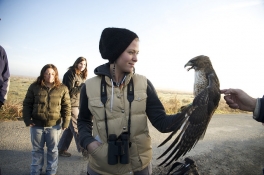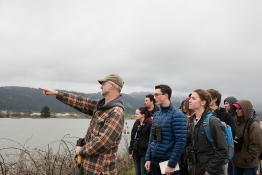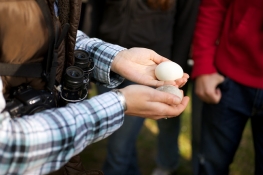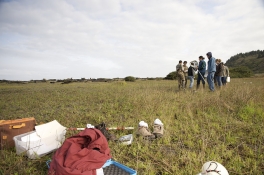Barbara Clucas
Associate Professor
Research Interests: Conservation Biology, Urban Ecology and Animal Behavior.
Education
Courses Taught
Research
I am interested interspecific interactions and how they affect species survival, behavior and the conservation of biodiversity. My work uses field, experimental and comparative approaches and lies at the interface of conservation, animal behavior, ecology, and evolution. My current research projects fall into several broad categories which are briefly outlined below.
Integrating Conservation Biology and Animal Behavior
Understanding how best to manage and conserve species naturally involves understanding their behavior. We can also use animal behavior to develop solutions to conservation issues.
For example, with undergraduate students, I am developing and testing the effectiveness of strategies to monitor squirrel species using behavioral methods (e.g., acoustic playbacks).
I am also working with my graduate students to integrate an understanding of common raven behavior into management of the threatened western snowy plover.
Urban Ecology
I am addressing how urbanization influences species diversity (in particular birds) in urban areas. I am interested in examining how and why certain species persist in urban areas while others do not.
Large-scale Biodiversity Monitoring
In collaboration with the California Department of Fish and Wildlife, my graduate students and I assessed the influences of human disturbance, drought and species co-occurrences across two ecoregions in California: the Central Valley and Mojave Desert. This project utilized remote monitoring of vertebrates (e.g., camera traps and acoustic recorders) across approximately 600 sites.
Non-Invasive Survey Techniques for Small Mammals
My graduate students and I are working to develop survey techniques for small mammals (squirrels, mice, rats, voles and shrews) using camera traps and acoustic recorders.
Human Dimensions of Conservation
An understanding of the most influential species in urban ecosystems and their effects on other ecosystems is a must for conservation. My research uses human survey techniques to understand how human interact with wildlife and how their actions can impact biodiversity in urban areas and beyond.
Previous Research
My past research examined how interspecific flocking affects communication behavior in songbirds (Clucas et al. 2004), how predator-prey interactions can lead to the evolution of unique antipredator behavior in ground squirrels (Clucas et al. 2008a,b and Clucas et al. 2010) and how interactions between humans and birds in urban areas can influence both human and bird behavior (Clucas and Marzluff 2011, Clucas et al. 2011, Clucas and Marzluff 2012, Clucas et al. 2013), the economic valuation or urban birds (Clucas et al. 2015) and how urbanization influences biodiversity (Clucas and Marzluff 2015, Marzluff et al. 2016).
My dissertation work at the University of California, Davis focused on the evolution of predator-prey interactions between rattlesnakes and ground squirrels species. I investigated a unique behavior in ground squirrels - predator scent application - experimentally testing its function in the field and lab and tracing its evolutionary history with phylogenetic comparative methods and the fossil record.
I discovered that snake scent application in ground squirrels reduces rattlesnake foraging behavior and that this unique antipredator behavior likely evolved at least 30 million years ago in the common ancestor of ground squirrels and chipmunks. I also found that squirrel species that historically and currently co-occur with rattlesnakes exhibit snake scent application, but that the behavior has been lost in species that currently do not co-occur with rattlesnakes.
http://www.nytimes.com/2008/02/05/science/05obsqui.html?_r=1&ref=science&oref=slogin
https://www.pbs.org/wnet/nature/squirrel-masks-scent-with-rattlesnake-skin/13399/
For my postdoctoral research at the University of Washington and Humboldt Universität, I led an international comparative study investigating human-avian interactions in Berlin, Germany and Seattle, Washington. I found that variation in actions and attitudes of humans towards birds influenced avian diversity, abundance and behavior in these urban areas. My results and studies in other urban areas suggest birds and humans have a reciprocal relationship in urban areas: humans can create bird habitat and feeding opportunities and in turn, birds can provide a window into nature, which can improve human well-being. A full understanding combining biological and socio-economic components of these reciprocal relationships will increase our ability to conserve and restore urban ecosystems that benefit both humans and birds. Furthermore, the importance of understanding urban ecosystem processes will only increase as urban areas expand worldwide.
During my postdoc in Seattle, I also worked with undergraduate students on a project investigating whether American crows (Corvus brachyrhynchos) responded to different human facial features in urban areas (Clucas et al. 2013). We compared flight initiation distances and urgency of escape behavior to human approaches varying in eye contact and facial expression. We examined if crows distinguish between an approaching human that is directly gazing at them versus a human approaching them with an averted gaze and if crows differentiate a smiling versus scowling human approaching them. We found that crows fled sooner and more urgently when humans were directly gazing at them, however, they did not react differently to varying human facial expressions. Crows likely perceive a human directly gazing at them as a reliable threatening visual cue while they either do not perceive differences in facial expression or do not use them as a reliable cue of threat. These results possibly represent an adaptation to living in human-dominated, urban areas. This work also suggests that disturbance of birds during sensitive periods (nesting) could perhaps be lessened by humans avoiding direct eye contact with certain susceptible species.
http://www.scientificamerican.com/article.cfm?id=crows-show-off-social-skills
Prospective Graduate Students
If you are interested in joining my lab, please send me an email with the subject line “Prospective Graduate Student” and in the email describe your research interests and why you want to pursue a master’s degree in Wildlife Biology (also attach your CV and unofficial transcripts).
*Please note: I will be going on sabbatical and will not be taking on additional students for Spring 2024 or Fall 2024
Current Graduate Students
| Name | Thesis |
|---|---|
Ryan Matilton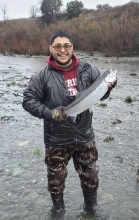 |
Bat Diversity on the Klamath River |
Janelle Chojnacki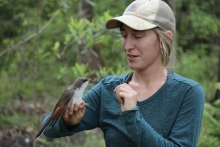 |
Raven Foraging and Movement in Relation to Predation of the Threatened Western Snowy Plover |
Alon Averbuj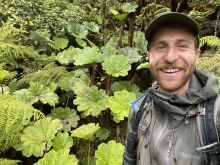 |
Spatial Ecology of Ravens While my family is from Santa Fe, Argentina, I was born in Haifa, Israel. We moved to San Diego, California when I was very young, where I explored the diverse chaparral, marine, and desert ecosystems around me. I fell in love with birds the first time my brother identified a mourning dove by... Read Alon's bio |
Sydney McCluskey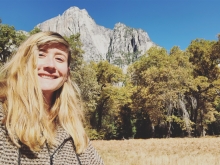 |
Using Novel and Traditional Survey Techniques to Monitor Small Mammal Species in Northwestern California |
Former Graduate Students
| Name | Thesis |
|---|---|
|
Travis Farwell 2022 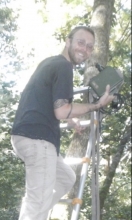 |
Geographic and seasonal variation of flying squirrel vocalizations in California ABSTRACT: Advancements in bioacoustics field studies have further elucidated spatial, temporal, and behavioral aspects of otherwise-cryptic species, as well as offering insights into species communication. The discovery of high-frequency vocalizations in North American flying squirrels in... Read Travis Farwell's bio |
|
Leigh J. Marshall 2021 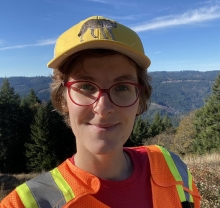 |
Recreation, vegetation management, and disease impact sympatric carnivore activity in California's East Bay parks Leigh used camera traps to survey urban parkland in California’s East Bay Area for mammalian carnivore presence to investigate the potentially additive effects of development, non-consumptive recreation, and invasive vegetation management on spatiotemporal dimensions of carnivore habitat use,... Read Leigh J. Marshall's bio |
|
Chad Moura 2020 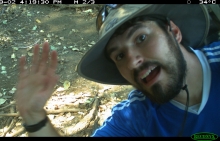 |
Temporal Partitioning of Mammalian Mesopredators in Response to Anthropogenic Urbanization and Climate Change in California’s Central Valley Born in the heart of the Silicon Valley in San Jose, California, Chad has always been surrounded by sprawling suburbia that abruptly interfaces with the tall trees and open spaces of the Santa Cruz Mountains. He has always been enthralled with the amount of diversity in flora, fauna, culture, and... Read Chad Moura's bio |
|
Molly Parren 2019 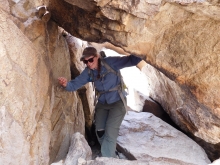 |
Drought and Coyotes Mediate the Relationship Between Mesopredators and Human Disturbance in California Molly used camera trap data collected at 585 sites in 2016 (drought) and 2017 (post-drought) in both the Central Valley and Mojave Desert of California for her thesis. She examined how drought and co-occurrence with coyotes (Canis latrans) mediate spatial patterns of mesopredator occurrence across... Read Molly Parren's bio |
|
Trinity Smith 2019 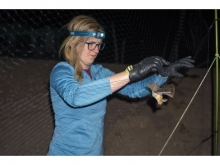 |
Elucidating Patterns of Bat Species Occupancy Across a Disturbed Landscape in California’s Central Valley Trinity is broadly interested in how non-game wildlife use habitat in modified landscapes. Her thesis research was conducted as part of a partnership with the California Department of Fish and Wildlife. Trinity used bat acoustics to examine how bats use agricultural landscapes in the California... Read Trinity Smith's bio |
Publications
Peer-Reviewed Publications (underline indicates student and + indicates graduate student)
- Farwell T+, Diggins CA, & Clucas B (2024) Ultrasonic vocalizations of the Humboldt’s flying squirrel (Glaucomys oregonensis). Western North American Naturalist. 84(1):5. https://scholarsarchive.byu.edu/wnan/vol84/iss1/5/
- Parren M+, Furnas BJ, Nelson MD, Barton DC & Clucas B (2022) Drought and coyotes mediate mesopredators’ response to human disturbance. Ecosphere 13:e4258. [https://doi.org/10.1002/ecs2.4258]
- Moura CW+, Clucas B & Furnas BJ (2022) Humans are more influential than coyotes on mammalian mesopredator spatiotemporal activity across an urban gradient. Frontiers in Ecology and Evolution 10:867188. [https://doi.org/10.3389/fevo.2022.867188]
- Clucas B and Atkins Z (2022) Using camera traps to survey Humboldt’s flying squirrels in old and second growth redwood forests. Northwestern Naturalist 103:11-19.
- Diggins C, Lipford, A Farwell T+, Eline D, LaRose S, Kelly C, and Clucas B (2022). Can camera traps be used to differentiate species of North American flying squirrels? Wildlife Bulletin e1323.
- Clucas B (2021) Human dimensions of predator management for threatened western snowy plovers. Wader Study 128(1):1-9.
- Smith TN+, Furnas BJ, Nelson MD, Barton DC and Clucas B (2021) Insectivorous bat occupancy is mediated by drought and agricultural land use in a human modified ecoregion. Diversity and Distributions 27: 1152-1165. [https://doi.org/10.1111/ddi.13264]
- Chock RY*, Clucas B*, Peterson E*, Blackwell BF, Blumstein DT, Church K, Fernandez-Juricic E, Francescoli G, Greggor A, Kemp P, Pinho G, Sanzenbacher P, Schulte BA, Toni P (2021) Examining potential impacts of solar power facilities from an animal behavior perspective. Conservation Science and Practice 3:e319. [https://conbio.onlinelibrary.wiley.com/doi/epdf/10.1111/csp2.319] (*indicates shared first author)
- Clucas B, Smith TN+, Carlino J, Daniel S, Davis A, Douglas L+, Gulak MM, Kanga Livingstone SL, Lopez S, Kerr KJ, Koehn KM, Lloyd KA, Medina JA, Miller EAS, Prior AM, Sandoval M, Shedlock A & Thornton S (2020) A novel method using camera traps to record effectiveness of artificial perches for raptors. California Department of Fish and Wildlife Journal 106(3): 203-214.
- Harris M, Clucas B, Stanek J and Whitfield M (2019) Wildlife mortalities in open-topped pipes in Central California. Western Wildlife 6:50-60.
- Clucas B, Parker I, & Feldpausch-Parker AM. (2018) A systematic review of the relationship between urban agriculture and biodiversity. Urban Ecosystems 21:635-643.
- Marzluff JM, Clucas B, Oleyar D, & DeLap J. (2016) The causal response of avian communities to suburban development: a quasi-experimental, longitudinal study. Urban Ecosystems 19: 1597-1621.
- Clucas B & Marzluff JM. (2015) A cross-continental look at the patterns of avian species diversity and composition across an urbanization gradient. Wildlife Research 42(7): 554-562.
- Clucas B, Rabotyagov SS, & Marzluff JM (2015) How much is that birdie in my backyard? A cross-continental economic valuation of native urban songbirds. Urban Ecosystems 18: 251-266.
- Clucas B, Marzluff JM, Mackovjak D & Palmquist I. (2013) Do American crows pay attention to human gaze and facial expressions? Ethology 119: 1-7.
- Clucas B and Marzluff JM (2012) Attitudes and actions towards birds in urban areas: human cultural differences influence bird behavior. Auk 129: 8-16.
- Clucas B, Ord TJ, & Owings DH (2010) Fossils and phylogeny uncover the evolutionary history of a unique antipredator behavior. Journal of Evolutionary Biology 23: 2197- 2211.
- Kübler, S., Marzluff, J.M. & Clucas, B. (2008) Wechselbeziehungen zwischen Vögeln und Menschen in der Stadt. Die Vogelwarte 46/4: 321.
- Clucas B, Owings DH, & Rowe MP (2008) Donning your enemy’s cloak: ground squirrels exploit rattlesnake scent to reduce predation risk. Proceedings of the Royal Society London, Series B 275: 847-852.
- Clucas B, McHugh K, & Caro T (2008) Flagship species on covers of US conservation and nature magazines. Biodiversity and Conservation 17: 1517-1528.
- Sergio F, Caro TM, Brown D, Clucas B, Hunter J, Ketchum J, McHugh K, Hiraldo F (2008)Top predators as conservation tools: ecological rationale, assumptions and efficacy. Annual Review of Ecology, Evolution, and Systematics 39: 1-19.
- Clucas B, Rowe MP & Owings DH (2008) Snake scent application in ground squirrels (Spermophilus spp.): A novel form of antipredator behaviour? Animal Behaviour 75: 299-307.
- Ord TJ, Peters RA, Clucas B & Stamps JA (2007) Lizards speed up visual displays in noisy motion habitats. Proceedings of the Royal Society of London, Series B 274: 1057- 1062.
- Clucas B, Freeberg TM & Lucas JR (2004) Chick-a-dee call syntax, social environment, and season affect vocal responses of Carolina chickadees (Poecile carolinensis). Behavioral Ecology and Sociobiology 57: 187-196.
- Freeberg TM, Lucas JR & Clucas B (2003) Variation in chick-a-dee calls of a population of Carolina Chickadees, Poecile carolinensis: identity and redundancy within note types. Journal of the Acoustical Society of America 113: 2127-2136.
Editorial Reviewed Publications
- Clucas B. (2014) Integrating animal behavior and conservation: Why urban ecology? The Conservation Behaviorist 12(1): 2-3.
- Clucas B, Marzluff JM, Kübler S & Meffert P (2011) New directions in urban avian ecology: reciprocal connections between birds and humans in cities. In: Perspectives in Urban Ecology, pp 167-195 (ed W Endlicher et al.) Springer.
- Clucas B and Marzluff JM (2011) Coupled relationships between humans and other organisms in urban areas. In: Urban Ecology: Patterns, Processes, and Applications, pp 135-147, (ed. J. Niemelä) Oxford University Press, Oxford, UK.
- Clucas B (2010) Defensive Chemicals, In: The Encyclopedia of Animal Behavior (eds. M. Breed and J Moore). Elsevier: Amsterdam, NL.
- Clucas B (2010) Predation and Predator Defense. In:The Encyclopedia of Applied Animal Behaviour and Welfare (ed. Mills, D.). CAB International: Wallingford, UK.
- Clucas B, Daniel JC, & Blumstein DT (2006) Observing and Quantifying Behavioral Sequences.

